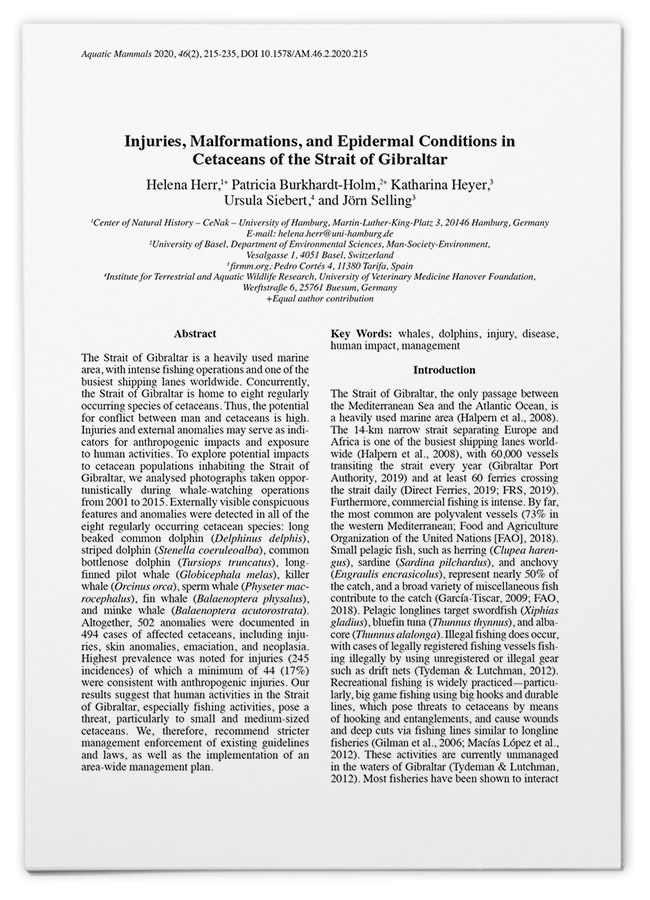Injuries, Malformations, and Epidermal Conditions in Cetaceans of the Strait of Gibraltar
Wissenschaftliche Publikation von Jörn Selling und Katharina Heyer
Aquatic Mammals 2020, 46(2), 215-235

Die Publikation ist zum Download freigegeben:
Helena Herr, Patricia Burkhardt-Holm, Katharina Heyer, Ursula Siebert, and Jörn Selling
Abstract:
The Strait of Gibraltar is a heavily used marine area, with intense fishing operations and one of the busiest shipping lanes worldwide. Concurrently, the Strait of Gibraltar is home to eight regularly occurring species of cetaceans. Thus, the potential for conflict between man and cetaceans is high. Injuries and external anomalies may serve as indicators for anthropogenic impacts and exposure to human activities. To explore potential impacts to cetacean populations inhabiting the Strait of Gibraltar, we analysed photographs taken opportunistically during whale-watching operations from 2001 to 2015. Externally visible conspicuous features and anomalies were detected in all of the eight regularly occurring cetacean species: long beaked common dolphin (Delphinus delphis), striped dolphin (Stenella coeruleoalba), common bottlenose dolphin (Tursiops truncatus), long-finned pilot whale (Globicephala melas), killer whale (Orcinus orca), sperm whale (Physeter macrocephalus), fin whale (Balaenoptera physalus), and minke whale (Balaenoptera acutorostrata). Altogether, 502 anomalies were documented in 494 cases of affected cetaceans, including injuries, skin anomalies, emaciation, and neoplasia. Highest prevalence was noted for injuries (245 incidences) of which a minimum of 44 (17%) were consistent with anthropogenic injuries. Our results suggest that human activities in the Strait of Gibraltar, especially fishing activities, pose a threat, particularly to small and medium-sized cetaceans. We, therefore, recommend stricter management enforcement of existing guidelines and laws, as well as the implementation of an area-wide management plan.

